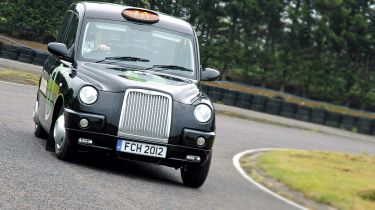Lotus hydrogen cab
Verdict as zero emissions taxi joins the ranks
London Mayor Boris Johnson wants all taxis to have zero emissions by 2020, so if this project continues to go well, the fuel cell hybrid taxi could easily replace diesels within the decade. The technology and packaging are amazing, as are the comfortable ride and total lack of engine noise – a boon for both passengers and drivers. It all bodes well for future fuel cell vehicles. All we need now is the infrastructure to support it.
IT’S the cleanest taxi yet – and this black cab is all the work of Lotus! Powered by a hydrogen fuel cell and with an electric motor at the rear, its hybrid powertrain means zero emissions and no clattery diesel engine.
Beneath the bonnet lies a 154-litre tank to house the hydrogen. The 30kW fuel cell is mounted in the transmission tunnel where the gearbox would normally sit and the 55kW electric motoris between the rear wheels.
Lotus has ditched the taxi’s ancient rear suspension in favour of a modern set-up, so the ride for rear passengers is improved. But there’s no loss of cabin space, so the fuel cell taxi can still accommodate five people.
The only obvious change inside is the flat, silver transmission selector in place of a traditional gearstick. Rear passengers can watch a small screen mounted behind the driver that displays the power split between the motor and the fuel cell.
Performance is stronger, too, with the fuel cell model likely to outsprint a standard taxi to 60mph by three or four seconds. The average range is 250 miles.
A fleet of 20 fuel cell hybrid cabs will be up and running by 2012, and six, London-based hydrogen filling stations should be active by then, too. If a hydrogen fuel network gets enough backing, there’s no limit to the possibilities of this technology.



